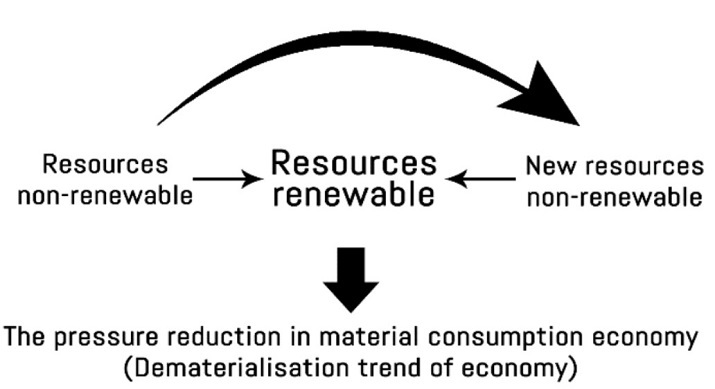
 Data Structure
Data Structure Networking
Networking RDBMS
RDBMS Operating System
Operating System Java
Java MS Excel
MS Excel iOS
iOS HTML
HTML CSS
CSS Android
Android Python
Python C Programming
C Programming C++
C++ C#
C# MongoDB
MongoDB MySQL
MySQL Javascript
Javascript PHP
PHP
- Selected Reading
- UPSC IAS Exams Notes
- Developer's Best Practices
- Questions and Answers
- Effective Resume Writing
- HR Interview Questions
- Computer Glossary
- Who is Who
Rematerialization of Shares
Introduction
A client can have his electronic assets transformed into physical certificates through a procedure called rematerialization. The Depository Participant (DP) with whom the client has an account must receive the Rematerialization request from the client. When the Depository Participant (DP) inputs the request into its system, the client's holdings are automatically blocked to that degree. The DP submits the application form to the Issuer/R&T agent and releases the request to National Securities Depository Limited (NSDL). The Issuer/R&T agent prints the certificates, mails them to the client, and simultaneously notifies National Securities Depository Limited (NSDL) electronically that the request was approved. The blocked balances of the client are then deducted.
Concept of Rematerialization
In the financial market, rematerialization is the process of turning electronic or dematerialized ownership of securities, including shares into tangible certificates. The process is the opposite of dematerialization.

The transfer operator receives electronic holdings from shareholders during rematerialization, cancels the electronic entry, and then provides actual certificates of ownership in the shareholder's name. These tangible certificates can be traded or held to indicate ownership of the securities.
It is vital to remember that according to the jurisdiction and the particular legislation in existence, the availability and methods for Rematerialization may differ. To comprehend the conditions and effects of Rematerialization in their particular situation, shareholders should speak to their legal counsel.
Features of Dematerialization
Account management is the responsibility of the Depository Participant (NSDL or CDSL).
Only digital formats are used for all transactions.
The process of dematerialization is simple. Almost all investors have encountered it at least once. It is a common component of share trading.
The process of dematerialization is simple. Almost all investors have encountered it at least once. It is a common component of share trading.
The annual maintenance fees range from Rs. 500 to Rs. 1000. The digital form faces few risks.
Features of Rematerialization
The process of rematerializing involves changing the share's electronic records to paper (physical) form. Post-rematerialization, all transactions include physical exchanges.
They are assigned unique numbers by the RTA.
Post-rematerialization, all transactions include physical exchanges.
Physical certifications don't require any upkeep fees.
Account maintenance is the responsibility of the business.
Rematerialization is a protracted, difficult process. It is challenging and can call for professional aid.
The risk of fraud and forgery about actual papers is higher.
Steps To Do Rematerialization
Investors must complete a Remat Request Form (RRF) for their respective DP, just as the share dematerialization process. Investors are unable to exchange their shares while the process of Rematerialization is taking place.Rematerialization takes place in the manner described below
Step 1 Investor contacts the appropriate
Step 2 Depository participants give the investor a Remat Request Form (RRF).
Step 3 The depository participant makes the application to the bank and share issuer after receiving the completed RRF and temporarily bans the investor's account.
Step 4 The share issuer creates real certificates and sends them after verifying with the depository that the request was processed correctly
Step 5 The restricted balance of the account in question is deducted.
Legal and Regulatory Aspects of Rematerialization
Shares that have been rematerialized often fall under the jurisdiction of securities rules and regulations. These regulations cover the creation, ownership, and transfer of investments, including shares. Companies and shareholders engaged in the rematerialization process shall comply with all applicable securities regulations.
Provisions about the issuance disposal, or rematerialization of shares may be found in the Companies Act or comparable legislation in a given jurisdiction. Companies that rematerialize must ensure that all pertinent aspects of company law, such as that documentation, stakeholder approvals, and reporting, are followed.
The securities market is supervised and governed by regulatory bodies like securities commissioners or market regulators. Companies and shareholders may be required to abide by certain norms or rules addressing the rematerialization of shares. These authorities keep an eye on compliance, safeguard investor interests, and encourage justice.
Disadvantages of Rematerialization
Higher expenditures Compared to keeping shares in electronic form, rematerialization may incur higher expenditures. For rematerialization services, shareholders may be charged administrative costs, courier fees, and other relevant costs.
Risky to obtain replacement Physical share certificates might be misplaced, stolen, or damaged. It may be difficult to locate or obtain replacement certificates if the originals are lost or destroyed. As a result, you can lose ownership of the shares or have trouble selling or transferring them.
Labor-intensive and laborious procedure Rematerialization is a labor-intensive and laborious procedure. The physical certificates must be submitted by shareholders for rematerialization, which may necessitate trips to the registrar. Especially for stockholders who favor the quickness and ease of electronic trading, the method may cause delays in trades and be cumbersome.
Security issues Physical certificates of ownership are more susceptible to fraud than electronic shares, which can also present security problems. The certificates are vulnerable to unauthorized access or falsification because of their physical characteristics. It becomes essential to maintain sufficient security procedures to protect the certificates.
Difficult procedure Physical share certificates impede shareholders' access to and management of their investments. Physical certificates are not easily retrieved or traded online as electronic holdings can. To sell or exchange their shares, shareholders might be required to physically deliver their certificates or complete a more difficult process.
Unfavorable impression of rematerialization Investors and buyers in the market could occasionally have an unfavorable impression of the rematerialization of shares. It can be viewed as a step backward and a lack of faith in the computerized trading system.
Conclusion
Rematerialization is frequently employed in situations where shareholders would want to maintain physical certificates based on their preferences, certain legal needs, or exceptional circumstances. Dematerialization, which provides the efficiency and ease of keeping securities electronically, has become more popular in many nations.
FAQs
Qns 1. What is the period of the Process of Rematerialisation?
Ans. It will take approximately 30 days from the date of submission.
Qns 2. Do dematerialized shares possess any unique number?
Ans. No. Dematerialized shares do not possess any unique number.
Qns 3. Can an investor Rematerialize his/her shares at any point in time?
Ans. Yes. An investor is privileged to Rematerialize his dematerialized shares at any point in time.

